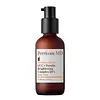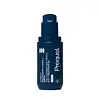What's inside
What's inside
 Key Ingredients
Key Ingredients

 Benefits
Benefits

 Concerns
Concerns

No concerns
 Ingredients Side-by-side
Ingredients Side-by-side

Water
Skin Conditioning3-O-Ethyl Ascorbic Acid
Skin ConditioningIsopropyl Myristate
EmollientSodium Ascorbyl Phosphate
AntioxidantBehenyl Alcohol
EmollientCaprylyl Methicone
Skin ConditioningHydrogenated Lecithin
EmulsifyingBenzyl Alcohol
PerfumingHydroxyphenoxy Propionic Acid
Skin ConditioningTetrahexyldecyl Ascorbate
AntioxidantFerulic Acid
AntimicrobialSimmondsia Chinensis Seed Oil
EmollientXanthan Gum
EmulsifyingTocopheryl Acetate
AntioxidantSodium Metabisulfite
AntioxidantBeta-Glucan
Skin ConditioningEthylhexylglycerin
Skin ConditioningDisodium EDTA
Polyacrylamide
C13-14 Isoparaffin
EmollientPolysorbate 20
EmulsifyingLaureth-7
EmulsifyingMaltodextrin
AbsorbentPhenoxyethanol
PreservativeBenzoic Acid
MaskingDehydroacetic Acid
PreservativeParfum
MaskingCitral
PerfumingLimonene
PerfumingLinalool
PerfumingWater, 3-O-Ethyl Ascorbic Acid, Isopropyl Myristate, Sodium Ascorbyl Phosphate, Behenyl Alcohol, Caprylyl Methicone, Hydrogenated Lecithin, Benzyl Alcohol, Hydroxyphenoxy Propionic Acid, Tetrahexyldecyl Ascorbate, Ferulic Acid, Simmondsia Chinensis Seed Oil, Xanthan Gum, Tocopheryl Acetate, Sodium Metabisulfite, Beta-Glucan, Ethylhexylglycerin, Disodium EDTA, Polyacrylamide, C13-14 Isoparaffin, Polysorbate 20, Laureth-7, Maltodextrin, Phenoxyethanol, Benzoic Acid, Dehydroacetic Acid, Parfum, Citral, Limonene, Linalool
 Reviews
Reviews

Ingredients Explained
These ingredients are found in both products.
Ingredients higher up in an ingredient list are typically present in a larger amount.
Ferulic Acid is a plant based antioxidant. By fighting free-radicals, ferulic acid can help reduce the formation of fine lines and hyperpigmentation.
When used with Vitamin C, Ferulic Acid has shown to prevent Vitamin C from breaking down. In other words, it acts as a stabilizer.
Ferulic Acid is sometimes used to preserve food. Foods containing Ferulic Acid include: oats, rice, eggplant, citrus.
In medicine, Ferulic Acid is being studied for helping with diabetes, Alzheimer's, and cardiovascular diseases.
Learn more about Ferulic AcidWater. It's the most common cosmetic ingredient of all. You'll usually see it at the top of ingredient lists, meaning that it makes up the largest part of the product.
So why is it so popular? Water most often acts as a solvent - this means that it helps dissolve other ingredients into the formulation.
You'll also recognize water as that liquid we all need to stay alive. If you see this, drink a glass of water. Stay hydrated!
Learn more about Water